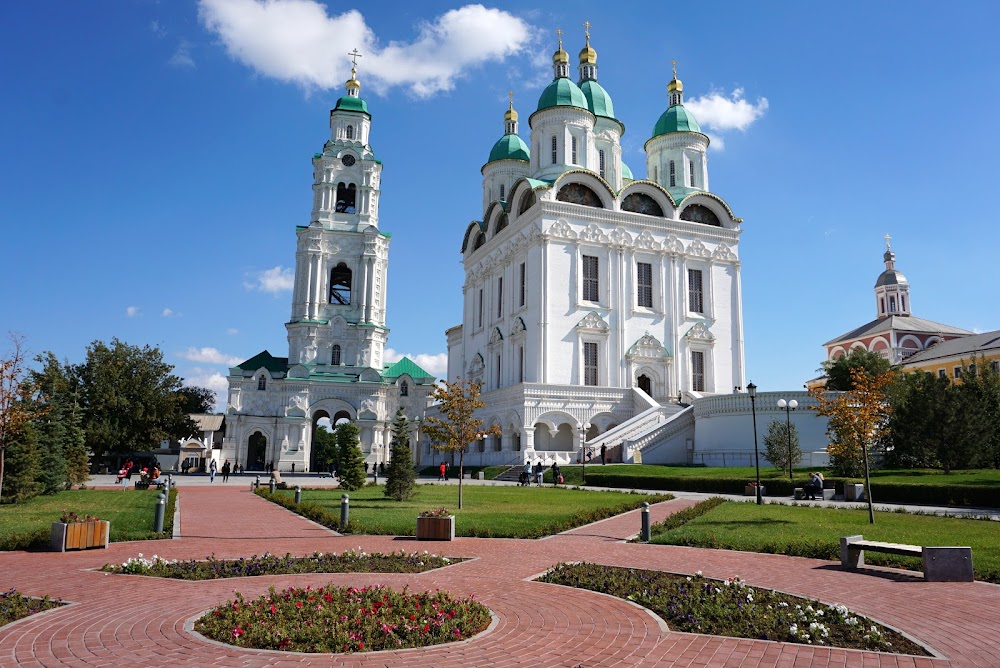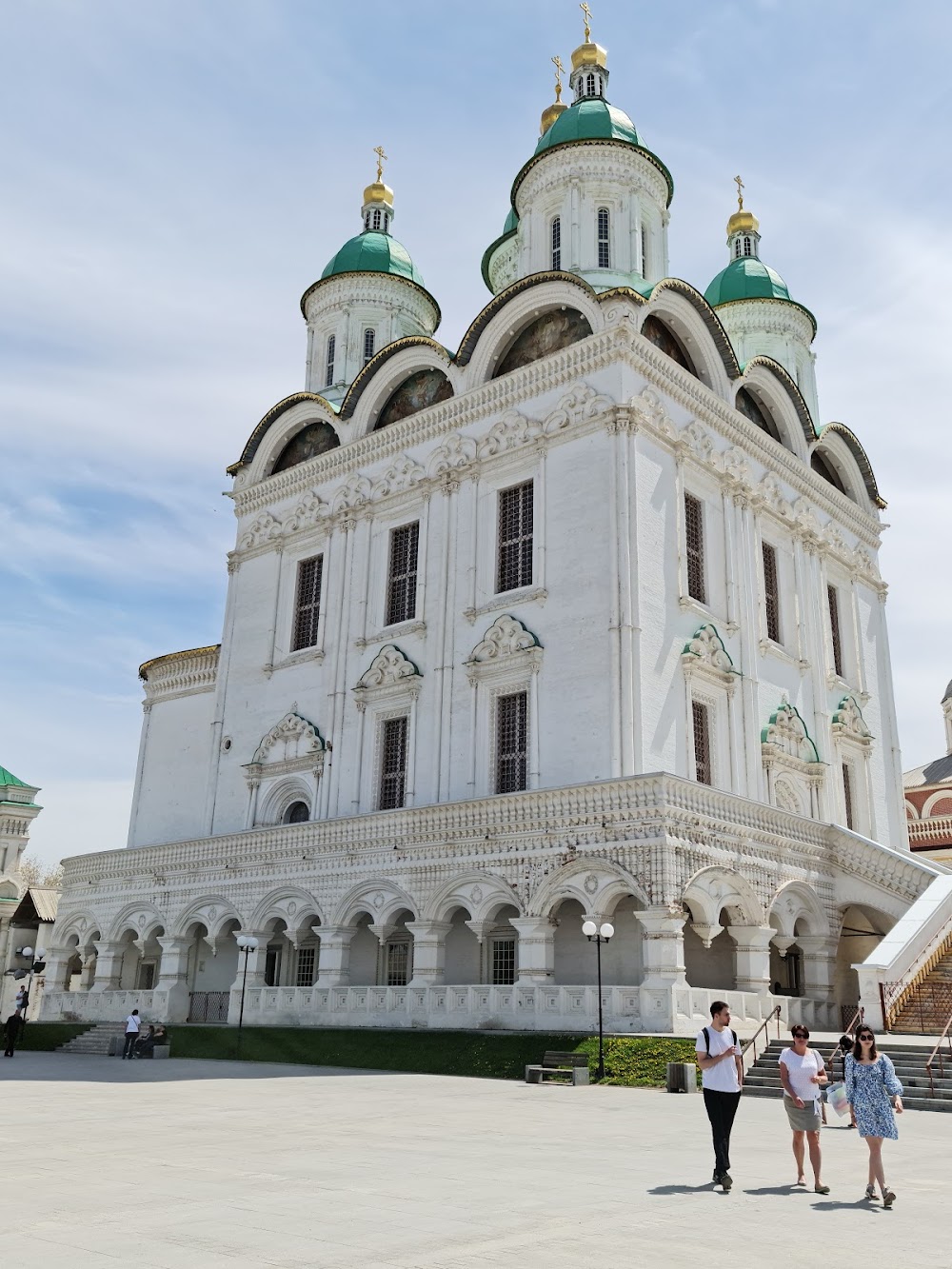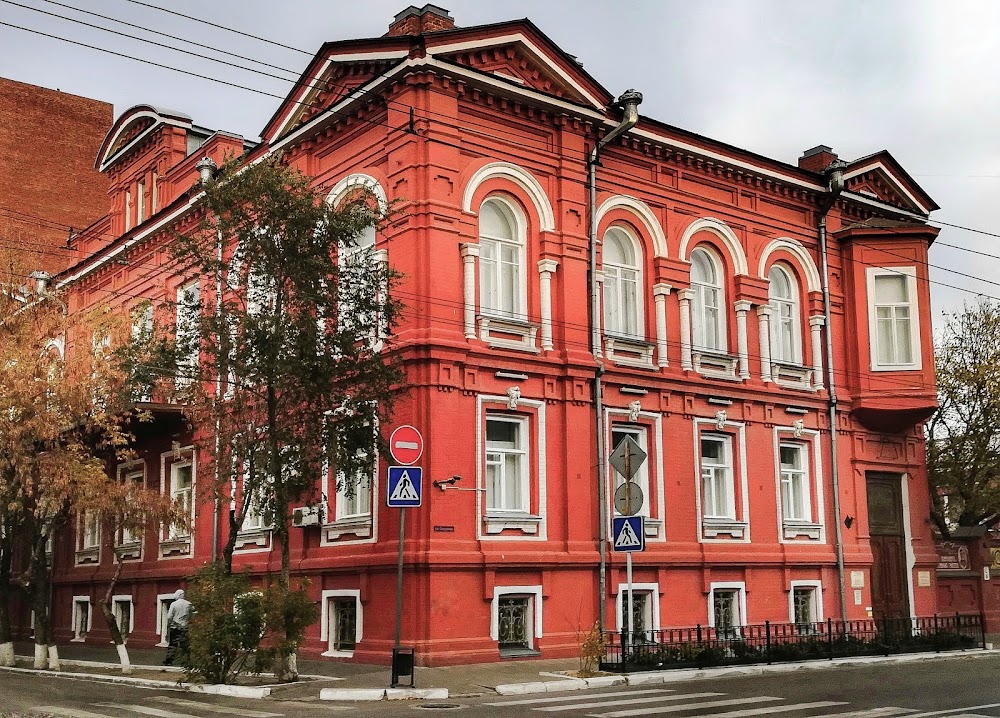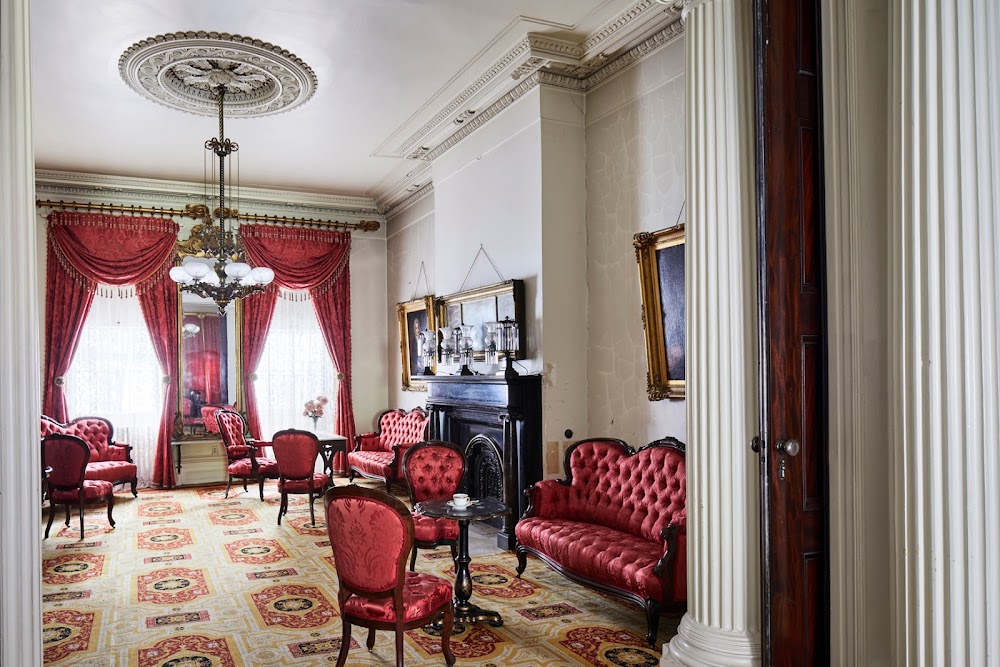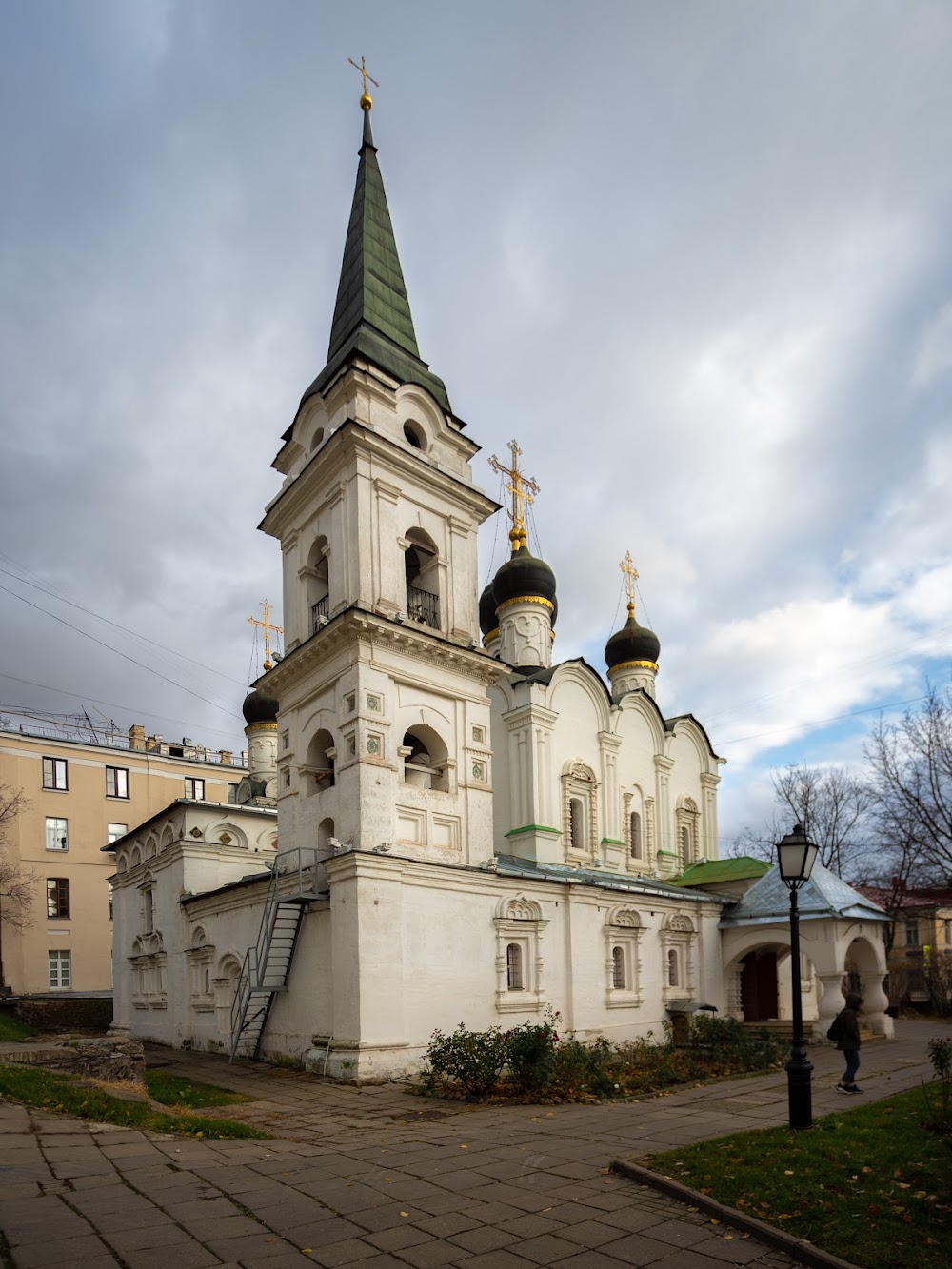Astrakhan Kremlin (Астраханский Кремль)
Overview
The **Astrakhan Kremlin**, situated in the vibrant city of Astrakhan within Astrakhan Oblast, Russia, stands as a magnificent historical fortress with roots tracing back to the 16th century. This remarkable structure is a proud symbol of the region's military and architectural heritage, attracting visitors eager to explore its storied past.
Construction of the Astrakhan Kremlin commenced in **1582** under the reign of Ivan the Terrible. This initiative was part of a broader strategy aimed at consolidating power and securing the southeastern frontiers of his vast empire. Strategically perched on elevated terrain along the banks of the **Volga River**, the Kremlin's location offered a natural defense against potential invaders, showcasing the astute military foresight of its creators.
Renowned architects, including **Mikhail Velikopolskiy** and **Deyeva Mikhail**, led the construction efforts. They skillfully blended traditional Russian architectural techniques with influences from Italian engineers active in Russia at the time. A distinctive feature of the Kremlin's design is its use of **white limestone**, quarried locally. This material not only ensured a robust and enduring structure but also imparted an elegant and imposing aesthetic to the fortress.
The Kremlin's design is a complex arrangement of walls, towers, and cathedrals. It features three main gates—the **Prechistenskaya**, **Plotskaya**, and **Red gates**—each showcasing unique architectural significance. Among the seven towers, notable examples include the **Kirovskaya**, **Artillery**, and **Red towers**. These towers were essential for surveillance and defense, enabling guards to spot approaching threats from considerable distances.
At the heart of the Kremlin lies the **Assumption Cathedral**, a stunning example of Russian Orthodox architecture built between **1698 and 1710**. Adorned with five gleaming domes and intricate frescoes depicting religious themes, this cathedral was designed by **Dorotheos Myakishevo** and reflects the elegance of the Moscow Baroque style.
Another important structure within the Kremlin is the **Trinity Cathedral**, constructed in the mid-16th century. While smaller and less ornate than the Assumption Cathedral, it holds historical significance as one of the earliest buildings in the Kremlin and symbolizes the resilience and faith of the local community.
The Kremlin also housed various essential structures, including the bishop's residence, administrative buildings, and soldiers' barracks. These facilities were vital for the governance and daily functioning of Astrakhan, particularly during periods of siege or conflict.
Throughout its history, the Astrakhan Kremlin has endured numerous assaults, including attacks from the **Cossacks**, the **Ottoman Empire**, and various nomadic tribes. Its formidable walls and strategic location transformed it into a crucial stronghold, playing an essential role in defending southern Russia.
In contemporary times, the Astrakhan Kremlin has evolved from a military fortress into a prominent **historical and cultural landmark**. Meticulously restored to preserve its architectural integrity, it now serves as a popular tourist destination, offering a captivating glimpse into the rich past of Astrakhan and the architectural brilliance of its builders.
Visitors to the Kremlin can explore a variety of exhibitions and events that highlight the region's history, culture, and traditions. The cathedrals, towers, and museums provide unique insights into the lives of those who once thrived within this extraordinary fortress.
In summary, the Astrakhan Kremlin is more than just a structure of stone and mortar; it embodies resilience, faith, and the enduring spirit of the people of Astrakhan. Its walls whisper tales of bygone eras, battles fought, and lives lived within its protective embrace.


